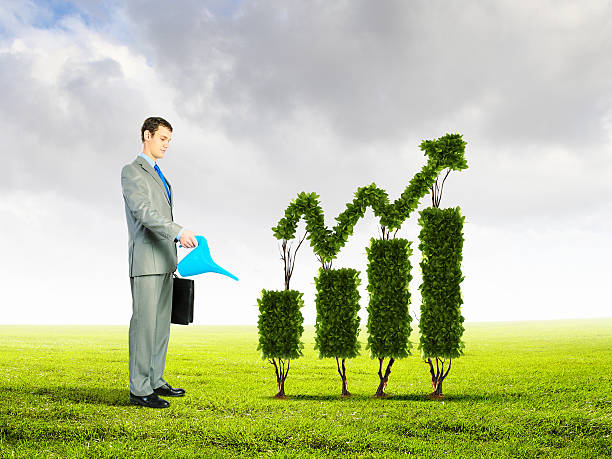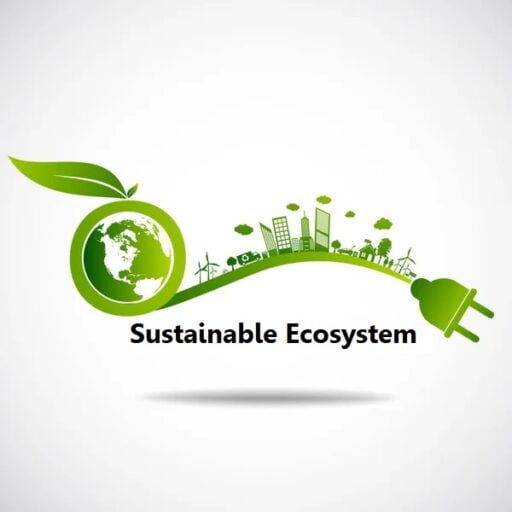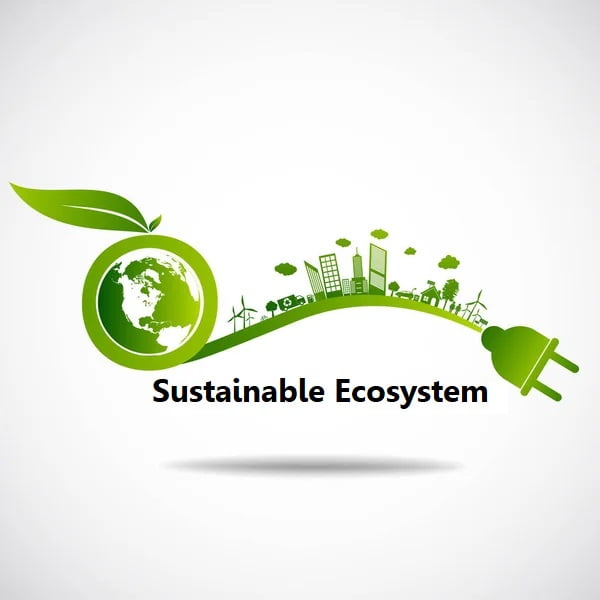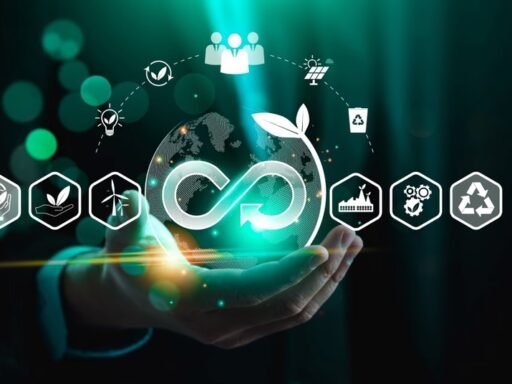Sustainability has become a term in today’s fast-paced corporate scene, with businesses increasingly realizing the value of working within a sustainable ecosystem. But what exactly is a sustainable environment, and why does it matter for businesses? In this complete tutorial, we’ll look at the notion of a sustainable ecosystem through the lens of corporate organizations and enterprises. From defining the qualities of a sustainable ecosystem to showcasing its advantages and real-world examples, we’ll dig deeply into this disruptive idea and its long-term business ramifications.
Understanding Sustainable Ecosystems
A sustainable ecosystem in the business sector is essentially a network of interconnected organizations, such as corporations, suppliers, partners, and stakeholders, that collaborate to accomplish common sustainability goals. Unlike traditional business models that focus primarily on profit maximization, sustainable ecosystems promote environmental stewardship, social responsibility, and economic growth. These ecosystems promote cooperation, openness, and innovation, resulting in an atmosphere in which enterprises work together to overcome difficult sustainability issues and achieve good societal change.

Characteristics of a Sustainable Ecosystem
A sustainable ecosystem has several critical characteristics that distinguish it from typical business approaches. First and foremost, it stresses stakeholder engagement and partnership, understanding that tackling sustainability concerns necessitates collaborative effort. Companies in sustainable ecosystems work together with suppliers, partners, and communities to discover common goals and build collaborative solutions. Second, openness and accountability are core concepts of sustainable ecosystems. Businesses are encouraged to be open about their sustainability activities, including environmental effects, social initiatives, and ethical standards. This transparency develops confidence among stakeholders and promotes a culture of responsibility within the ecosystem.
Benefits of Promoting a Sustainable Ecosystem
Promoting a healthy environment provides various benefits to firms, including greater creativity, resilience, and social responsibility. One of the key benefits of sustainable ecosystems is their capacity to foster innovation. These ecosystems, by bringing together varied viewpoints, knowledge, and resources, provide fertile ground for developing new solutions to sustainability concerns. Companies in sustainable ecosystems are more inclined to invest in R&D, experiment with new technologies, and investigate alternative business models to solve sustainability concerns.
Real-World Examples of Sustainable Ecosystems
Many businesses have adopted the notion of sustainable ecosystems and are reaping the benefits of their efforts. One such example is Interface, a worldwide flooring producer noted for its dedication to sustainability. Interface has implemented a closed-loop manufacturing process that recycles old carpets into new goods, decreasing waste and environmental impact. The organization works with suppliers, consumers, and communities to achieve its sustainability goals, illustrating the value of cooperation in a sustainable environment.
Another example is Unilever, a global consumer products corporation that has incorporated sustainability into its main business plan. Unilever’s Sustainable Living Plan sets ambitious targets for improving health and well-being. It also aims to reduce environmental impact and improve livelihoods for millions of people. The corporation collaborates extensively with suppliers, NGOs, and governments to advance these aims. This demonstrates the value of cooperation and collaboration in attaining sustainable results.

The Role of Leadership in Sustainable Ecosystems
Leadership is critical in building and supporting long-term organizational ecosystems. Effective leaders promote sustainability efforts, provide clear goals and expectations, and develop a culture of responsibility and creativity. Leaders encourage and motivate staff to incorporate sustainability principles into their everyday operations by setting a good example and displaying a commitment to it. Furthermore, forward-thinking leaders understand the value of cooperation and partnership in meeting sustainable objectives. They actively interact with stakeholders, get feedback from many views, and form coalitions to effect significant change. Leaders may drive their firms toward a more sustainable future by using their vision, devotion, and strategic counsel.
Overcoming Challenges in Building Sustainable Ecosystems
Though the benefits of sustainable ecosystems are obvious, businesses have problems in developing and maintaining them. One recurring difficulty is a lack of agreement among stakeholders on sustainability objectives and tactics. Companies may struggle to establish common ground while navigating opposing interests in the ecosystem. Furthermore, resource limits and financial demands can stymie investment in sustainability projects, particularly among small and medium-sized businesses. Overcoming these issues will need strong leadership, good communication, and a common commitment to sustainability. Businesses may overcome challenges and develop flourishing, sustainable ecosystems by encouraging communication, creating trust, and harnessing communal resources.
The Importance of Collaboration in Sustainable Ecosystems
Collaboration is at the core of sustainable ecosystems, promoting community effort and shared responsibility to achieve common sustainability goals. In a sustainable ecosystem, companies engage not just with one another. They also engage with stakeholders along the value chain, such as suppliers, consumers, regulators, and local communities. Companies that collaborate can better handle sustainability concerns by leveraging their combined capabilities, resources, and experience. Collaboration encourages creativity, accelerates development, and opens up new avenues for growth and influence. Furthermore, joint efforts might result in the creation of novel solutions and best practices that benefit the whole ecosystem. Collaboration allows enterprises to achieve higher sustainability outcomes than they could on their own, eventually contributing to the resilience and vitality of the ecosystem as whole.

FAQs
What exactly constitutes a sustainable ecosystem in the corporate context?
Answer: A sustainability ecosystem in the corporate world refers to a network of interconnected entities working towards environmental, social, and economic sustainability.
How does the concept of a sustainability ecosystem differ from traditional business models?
Answer: Unlike traditional business models focused solely on profit, a sustainability ecosystem emphasizes long-term viability by considering environmental and social impacts alongside financial gains.
What are the primary goals of fostering a sustainability ecosystem within corporate environments?
Answer: The primary objectives include reducing carbon footprints, minimizing waste, promoting social equity, and ensuring economic resilience for future generations.
Facilitating Sustainable Ecosystems with Fherist
Fherist offers a complete platform that links businesses, organizations, and individuals dedicated to sustainability. It acts as a catalyst for the development of sustainable ecosystems. Fherist provides firms with a plethora of resources, including tools, best practices, and cooperation possibilities, to help them progress their sustainability programs. The platform offers a unified portal for firms. Through it, they can display their sustainability initiatives, share ideas, and learn from others in the ecosystem. Fherist helps firms form partnerships and collaborations. This enables them to combine their resources and skills to address common sustainability concerns.
Furthermore, Fherist gives users access to a network of specialists and advisers that may provide advice and help on sustainability concerns. Businesses may expedite their road to sustainability by accessing Fherist’s platform and resources. This contributes to the establishment of flourishing, linked ecosystems that benefit society and the environment.

Adopting Sustainable Ecosystem for Long-term Growth
In conclusion, sustainable ecosystems provide a compelling framework for enterprises to address sustainability issues and effect good change. Companies may cultivate collaboration, leverage technology, and learn from real-world experiences. These efforts contribute to creating vibrant ecosystems that promote innovation, resilience, and social responsibility. Platforms such as Fherist offer essential resources and support to organizations. These resources include tools, partnerships, and analytics, helping them advance toward their sustainability goals. As we traverse an increasingly complicated and interconnected world, adopting sustainable ecosystems is critical for long-term corporate success. Companies that collaborate to achieve common sustainability goals can build a better, more sustainable future for future generations.








